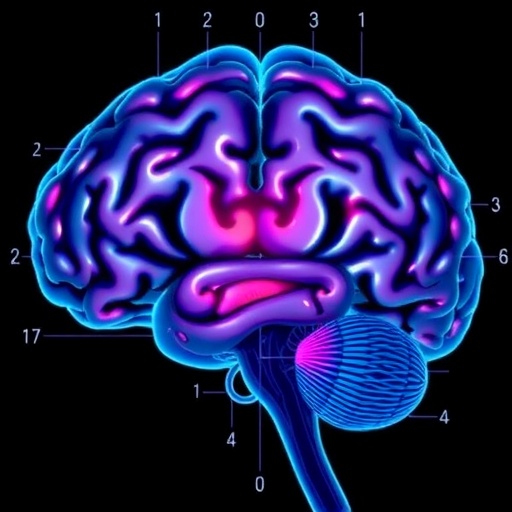In the realm of neurology, epilepsy poses a daunting challenge, particularly for those whose conditions resist conventional anti-seizure medications. Approximately 50 million people worldwide grapple with epilepsy, and alarmingly, one-third of these individuals find themselves enduring drug-resistant seizures. Surgery appears as a possible avenue for some patients, yet the intricacies of pinpointing seizure origins within the brain frequently complicate interventions. A burgeoning strategy, deep brain stimulation (DBS), offers a beacon of hope by delivering electrical impulses to targeted brain regions, potentially curtailing the severity of seizures for those who are not ideal candidates for surgical resection.
DBS has been effective in treating certain seizure types, particularly through electrical stimulation of the anterior nucleus of the thalamus, which has been approved in European and Canadian contexts. However, medical researchers have recently turned their attention to another intriguing target: the centromedian nucleus (CM) of the thalamus. This nucleus, known for its extensive connections throughout the cortex and subcortical structures, has shown promise in managing more severe forms of epilepsy, including frontal lobe seizures and conditions like Lennox-Gastaut syndrome. Yet, despite its potential, accurately targeting the CM for effective stimulation presents a formidable challenge due to its anatomical nuances.
Positioned deep within the brain, the CM is small and flanked by additional thalamic nuclei, which complicates its identification during the surgical process. Traditional imaging methods often fall short, leading to increased risks of erroneous electrode placement and subpar surgical outcomes. These complications have stymied broader adoption of CM-targeted DBS in clinical practice, leaving many patients without viable therapeutic options.
Recognizing these limitations, a dedicated team from the University Hospital La Princesa in Madrid, led by Dr. Cristina Virgina Torres Díaz, embarked on a comprehensive review of enhanced techniques that could significantly improve the localization of the CM. Collaborating with the University Medical Center of the Johannes Gutenberg University Mainz, the researchers outlined advancements in imaging technology and intraoperative neurophysiology that together provide a more accurate roadmap for electrode placement.
The review draws attention to high-resolution magnetic resonance imaging (MRI) techniques as vital tools for improving CM localization during DBS procedures. One extremely promising method, known as magnetization-prepared 2 rapid acquisition gradient echo (MP2RAGE), enhances visualization, enabling clearer differentiation between the CM and adjacent structures. By combining MP2RAGE with three-dimensional brain atlases and image gradient analyses, researchers achieve an unprecedented level of detail. Complementary methods, including quantitative susceptibility mapping (QSM) and innovative edge-enhancing gradient echo protocols, further bolster the accuracy of CM imaging.
In addition to sophisticated imaging, the review emphasizes the significance of intraoperative microelectrode recordings (MER). By deploying microelectrodes to capture the electrical activity of deep brain structures, surgeons can better discern between local tissues based on their respective neural firing patterns. Insights gleaned from MER indicate that the CM displays unique ‘tonic activity’ and distinct lower spike rates when compared to neighboring nuclei, such as the ventral lateral nucleus. This characteristic signature aids in refining electrode placements during surgery, enhancing the likelihood of achieving optimal therapeutic outcomes.
Moreover, the researchers explored the integration of diffusion tensor imaging (DTI) tractography in refining DBS procedures targeting the CM. This technology reveals the intricate neural pathways that interconnect various structures in the brain, allowing for targeted stimulation that aligns with specific circuits. Research utilizing tractography highlighted that optimal stimulation sites closely correspond to fiber tracts linking the CM with other critical areas such as the brainstem, cerebellum, sensorimotor cortex, and supplementary motor area. Such precision has resulted in patients experiencing substantial reductions in seizure frequency—often exceeding 50%—when electrode placements resonate with these anatomical pathways.
Dr. Torres Díaz remarked on their findings, revealing that patients who benefitted the most from CM-DBS displayed robust structural and functional connectivity between the stimulation site and intricate brain networks involved in controlling motor functions and arousal. This underscores the significance of targeting not merely a specific nucleus, but the broadly interconnected circuits it governs, thus facilitating enhanced outcomes in seizure management.
The implications of this review extend far beyond a mere collection of technical advancements. This comprehensive analysis serves as a strategic framework for implementing CM-DBS treatment pathways for patients grappling with drug-resistant epilepsy. The innovative melding of imaging modalities, electrophysiological mapping, and a detailed assessment of connectivity equips a surgical team with the necessary tools to perform accurate electrode placements. This individualized approach not only accommodates the diverse variations in brain anatomy and seizure networks but also enhances the overall chances of successful surgical outcomes.
As diagnostic methodologies evolve and provide deeper insights into complex brain networks, CM-DBS emerges as a potentially transformative treatment path for individuals whose epilepsy has previously defied management. Precision targeting transcends mere technical prowess; it embodies a promising journey towards renewed hope for patients afflicted with the most challenging forms of epilepsy, offering possibilities previously considered unattainable.
To summarize, the advancements outlined in this review signify a substantial leap towards overcoming longstanding challenges associated with epilepsy management. By harnessing a multidisciplinary strategy that inclines toward surgical accuracy and actual patient outcomes, the research community is poised to rewrite the narrative of epilepsy treatment, illuminating pathways that bridge the gap between resistance and resilience. This convergence of technology and medicine not only highlights the potential advancements within DBS but also reflects a broader vision aimed at bettering patient lives through enhanced therapeutic means.
Subject of Research: Not applicable
Article Title: Targeting the centromedian nucleus of the thalamus for epilepsy
News Publication Date: 26-Jun-2025
Web References: Original Article
References: DOI: 10.1016/j.bnd.2024.11.002
Image Credits: Credit: Dr. Cristina Virgina Torres Díaz from University Hospital La Princesa, Madrid
Keywords
Health and medicine, Epilepsy, Diseases and disorders, Neurological disorders, Deep brain stimulation, Drug resistance, Medical imaging, Medical technology, Clinical neuroscience




